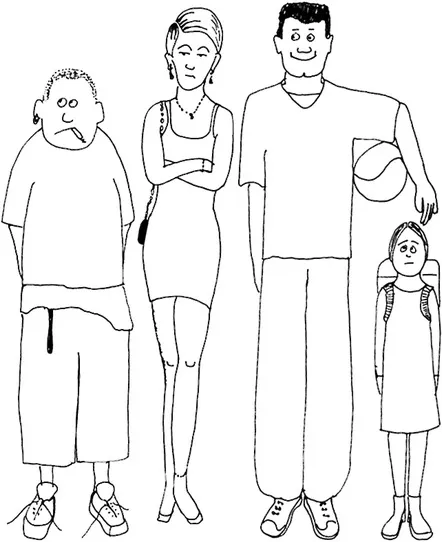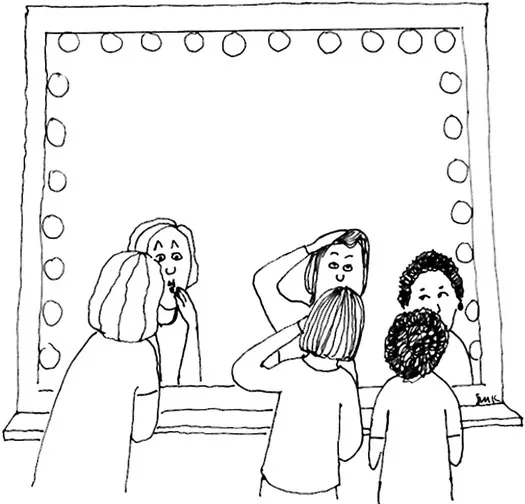
eBook - ePub
Groups
A Guide to Small Group Work in Healthcare, Management, Education and Research
Glyn Elwyn, Trisha Greenhalgh, Fraser Macfarlane
This is a test
Compartir libro
- 192 páginas
- English
- ePUB (apto para móviles)
- Disponible en iOS y Android
eBook - ePub
Groups
A Guide to Small Group Work in Healthcare, Management, Education and Research
Glyn Elwyn, Trisha Greenhalgh, Fraser Macfarlane
Detalles del libro
Vista previa del libro
Índice
Citas
Información del libro
In this introductory text, the author presents the law relating to child care and the reforms introduced by the Children Act 1989, assessing its impact on child care practice and procedures. Focusing on a practical interpretation of the law by the use of hypothetical examples, practice notes and recommendations, the book illustrates its relevance to those working in the caring and health professions, and incorporates details of various sets of Guidance and Regualtions issued by the Department of Health. In addition it provides an outline of adoption law, the principles of consent to treatment and the effect of surrogacy and "assisted reproduction" on the legal definition of parenthood.
Preguntas frecuentes
¿Cómo cancelo mi suscripción?
¿Cómo descargo los libros?
Por el momento, todos nuestros libros ePub adaptables a dispositivos móviles se pueden descargar a través de la aplicación. La mayor parte de nuestros PDF también se puede descargar y ya estamos trabajando para que el resto también sea descargable. Obtén más información aquí.
¿En qué se diferencian los planes de precios?
Ambos planes te permiten acceder por completo a la biblioteca y a todas las funciones de Perlego. Las únicas diferencias son el precio y el período de suscripción: con el plan anual ahorrarás en torno a un 30 % en comparación con 12 meses de un plan mensual.
¿Qué es Perlego?
Somos un servicio de suscripción de libros de texto en línea que te permite acceder a toda una biblioteca en línea por menos de lo que cuesta un libro al mes. Con más de un millón de libros sobre más de 1000 categorías, ¡tenemos todo lo que necesitas! Obtén más información aquí.
¿Perlego ofrece la función de texto a voz?
Busca el símbolo de lectura en voz alta en tu próximo libro para ver si puedes escucharlo. La herramienta de lectura en voz alta lee el texto en voz alta por ti, resaltando el texto a medida que se lee. Puedes pausarla, acelerarla y ralentizarla. Obtén más información aquí.
¿Es Groups un PDF/ePUB en línea?
Sí, puedes acceder a Groups de Glyn Elwyn, Trisha Greenhalgh, Fraser Macfarlane en formato PDF o ePUB, así como a otros libros populares de Medicine y Public Health, Administration & Care. Tenemos más de un millón de libros disponibles en nuestro catálogo para que explores.
Información
Part 1
Introduction
1
What is a group? And what does it do?
None of us are as smart as all of us.
Japanese proverb
What is a group?
There are many definitions available, and there has been considerable debate about their merits. MLJ Abercrombie, whose research into the use of small groups in higher education broke new ground in the 1960s, defined a group as ‘a number of people who are in face-to-face contact, so that each of them can interact with all the others’.1
Another early seminal writer on groups, Wilfred Bion, distinguished work groups from family, friendship or therapeutic groups. He defined a work group as ‘a planned endeavour to develop in a group the forces that lead to a smoothly running co-operative activity’.2
John Hunt, writing a decade later about group work in management, defined a group as ‘any number of people who are able to interact with each other, are psychologically aware of each other, and who perceive and are perceived as being members of a team’.3
Levine and Moreland define a group as several people ‘who interact on a regular basis, have affective ties with one another, share a common frame of reference, and are behaviourally interdependent’.4
Whatever the finer points of the definition, it is generally agreed (or at least assumed) that the members of a group have a common purpose or task, and that the interaction between them is closer, and follows a different pattern, than in casual or brief encounters. There is no fixed definition of how many members count as a group, but the dynamics of interaction change considerably if the group has more than about ten members (see p. 17). In practice, groups usually have between three and eight members.
The difference between a group and a team is inconsistently defined. Although Hunt and others use the terms ‘group’ and ‘team’ interchangeably, much of the recent research in social psychology has demonstrated that although teams are definitely a form of group, not all groups can be regarded as teams. For the purposes of this book, we have defined a group as a small number of people who have:
- a shared identity
- a shared frame of reference and
- shared objectives.
We have defined a team as a group in which the members distribute functions (i.e. in which there is an explicit division of labour).
We shall explore the characteristics of groups that move towards the status of a team in Chapter 8 (Performing) and in Part 4 (Small Group Work in Organisational Settings) in Chapters 14 (Decision Making and Problem Solving), 15 (Multidisciplinary Working) and 16 (Project Management).
Groups can be broadly classified into the following categories.3
- Formal groups are created as mechanisms within a wider organisation and supported by the structures and power relationships within that structure. Their functions tend to be clearly specified, their membership restricted and their control over resources limited. Formal groups include project teams and (sometimes but not always) committees, boards of directors and boards of examiners.
- Informal groups are looser and more erratic in their behaviour and less constrained by rules and expectations. They are usually based on friendship and/or prior shared beliefs about how things should be done. It is often in informal groups that new ideas are tested and creative solutions explored. Moreover, it is often within these informal groups and networks that real power resides within organisations, and the importance of this fact is widely recognised in the literature on social network theory.5
The particular focus of this book is the mechanism of the small group process (see Part 2) and the ways in which this process can be successfully applied in the learning situation (see Part 3), the workplace (see Part 4) and the research study (see Part 5).
When writing this book we were conscious that the very notion of a collection of individuals with an identity and sense of common purpose is a rare and special concept. Most so-called ‘groups’ would not fulfil even the most basic of the above definitions. How often, when you have been asked to lead or facilitate a group, have you been billeted into a reluctant, time-limited and somewhat confused gathering in which the members do not know (or even desire to know) each other’s names, and have no shared perspective or mutual trust. Whilst we recognise that this is a common experience, this book is not about what to do when there is inadequate time or commitment to get the basics right. However, although we recoil from addressing this worst-case scenario, we also recognise that even with considerable commitment from the facilitator and the members, practical constraints often require compromise. The counsel of perfection suggested in some of the later chapters of this book may need to be modified in response to both external and internal reality!

Most groups are a motley crew.
What does a group do?
The content of group work (i.e. what the group does) varies enormously, and it obviously depends on whether the group is formal or informal, the reason why it was set up, and the task or tasks that it sets out to address. The background and context of the group are considered further in Chapter 2 (see p. 21).
In contrast, the process of group work (i.e. how the group does it) tends to follow a common pattern whatever the group has been set up to achieve. The defining features of the group process are as follows:6
- 1 Active participation – i.e. everyone in the group takes part in some way. Note, however, that some participants naturally have a more interactive style than others. A member may contribute actively to the group process by body language, facial expression and the sensitive use of silence, as well as by verbal expression.Table 1.1: Examples of different types of group (adapted from a number of sources)7,8,9,10,11 and 12

- 2 A specific task – i.e. a defined and focused set of objectives. All group members must understand and agree on the objectives at the outset of the task, otherwise the group quickly becomes dysfunctional and frustrated.
- 3 Reflection – i.e. the group members incorporate experience into their shared task through an explicit process of discussion, questioning, evaluation and self-reflection.7 Reflection is a crucial feature of deep learning (see p. 176).

Reflection is a crucial feature of deep learning.
Why is group work suddenly so popular?
Organisations of all sizes and shapes are recognising that the achievement of successful outcomes, whatever those outcomes might be, is dependent on three critical lessons learnt over some 50 years of trial and error in various fields of research and practice:13
- process (how something is done) affects the outcome (the results or the product)
- in general terms (but for important exceptions see p. 166) teams are more successful than individuals
- group member participation leads t...